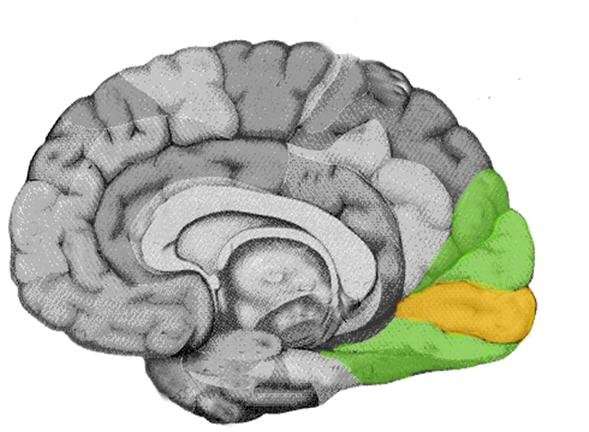Home » Health News »
How do we prioritize what we see?

It is known that different regions of the brain help us prioritize information so we can efficiently process visual scenes. A new study by a team of neuroscientists has discovered that one specific region, the occipital cortex, plays a causal role in piloting our attention to manage the intake of images.
The work, which appears in the latest issue of the journal Current Biology, relies on a method, transcranial magnetic stimulation (TMS), which helps illuminate this dynamic.
“By briefly disrupting cortical excitability of the occipital cortex with TMS we could extinguish the known effects of involuntary, or exogenous, covert spatial attention, and thus reveal a causal link between the occipital cortex and the effect of covert attention on vision,” explains Marisa Carrasco, a professor of psychology and neural science at New York University and the senior author of the paper.
“This is a surprising finding as most previous research shows that other areas of the brain—the frontal and parietal cortex—help us in selectively processing many images that come our way, but this research reveals that the occipital cortex also plays a critical functional role,” adds Antonio Fernández, an NYU doctoral student and first author of the paper.
In our daily lives, we are bombarded with an overwhelming amount of sensory information, notably visuals, from as big as skyscrapers to as small as computer screens. In spite of this, we have the impression of effortlessly understanding what we see, unaware of the complex mechanisms that, in a kind of cognitive triage, help us prioritize the information that we process. It’s been long shown that the processing of visual information and its accompanying neural computations consume a great deal of energy, which is finite and must be managed.
One of the ways we achieve this is through covert spatial attention, which enables us to select a certain location of a visual scene and prioritize its processing and guide behavior, even without moving our eyes to that location (which is why it is called covert).
Covert attention, whether voluntary (endogenous) or involuntary (exogenous), is a trade-off process—it benefits visual processing at the attended location at the expense of processing elsewhere.
Earlier neuroimaging and electrophysiological studies have shown that visual areas in the occipital cortex, located in the back of the brain, are part of the attention cortical networks, but it was unknown whether this region is necessary in the prioritizing of visual content.
Because of its well-established role in vision, Fernández and Carrasco specifically sought to determine if the occipital cortex played a causal role in guiding involuntary (exogenous) covert attention.
To do so, they conducted a series of experiments with human observers and used TMS to manipulate and briefly alter cortical excitability in the occipital area.
The authors asked the participants to make an orientation judgment by determining if an image was tilted right or left on a computer screen. They also manipulated participants’ covert attention with an additional image—a cue (small line) that appeared on the screen prior to stimuli presentation to automatically attract attention to its location. One stimulus appeared left and the other stimulus appeared right off center, while observers fixated at a central point. The cortical representation of one of the two stimuli was briefly disrupted using TMS. In some trials, “valid trials,” the cue indicated the stimulus location observers should respond to; in other trials, “invalid trials,” the peripheral cue indicated the other stimulus location. In neutral trials, both stimuli were cued.
Source: Read Full Article



